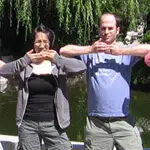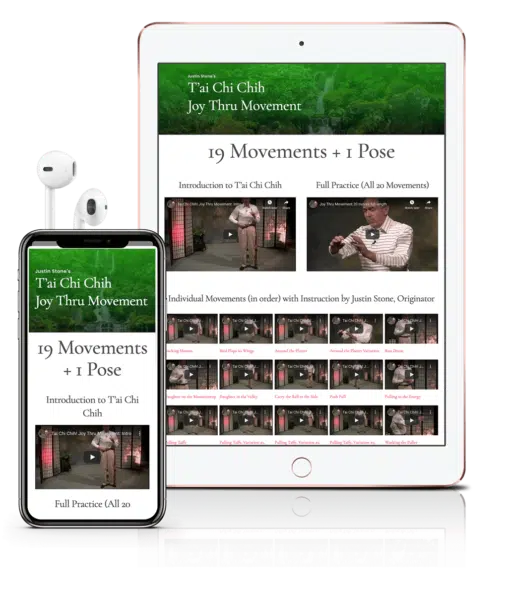“T‘ai Chi Chih® has changed my life,” say many people who practice TCC regularly. In fact, it is one of the most common statements of gratitude TCC originator Justin Stone has heard from students over many years. Improvements in physical, emotional, and mental health are enjoyed by students of all ages – children, teens, young adults, mid-lifers and seniors. The benefits are often quickly apparent to newcomers, as well as cumulative for those who have practiced TCC for years and decades.
Quotations below are from students and teachers, provided as inspiration and an invitation. This information is not intended to replace any medical treatment by, or perspectives from, your own health care provider.
TCC/COPD Pilot Study Reports Positive Benefits
By Hannah Hendrick, TCC teacher, Mountain View, HI
T‘ai Chi Chih teachers need only the laboratories of our own bodies, minds, and spirits, to promote TCC as a safe and effective movement system or “moving meditation” that increases lower extremity and core strength while improving physical balance and reducing stress. And people in wheelchairs or who, for other reasons, do seated TCC report an increase in upper extremity and core strength, as well as a greater sense of upper body balance and decreased stress.
But in order to reach chronic disease populations who could also benefit greatly from a regular TCC practice, it helps to be able to refer to research studies, especially if we seek to teach classes in health care institutions or educational systems. The article “T’ai Chi Exercise for Patients With Chronic Obstructive Pulmonary Disease: A Pilot Study” (Respiratory Care, November 2010, Vol. 55, No 11, pages 1475-1482) offers a helpful description of COPD (chronic obstructive pulmonary disease) and includes conclusions relevant to the regular practice of T’ai Chi Chih.
There is some lack of clarity about the contributions of the 30-minute “warm-up exercises” (similar to the breathing/stretching program I teach), the small sample size, and the comment that T’ai Chi Ch’uan “has a high adherence rate.” This may be true in research “studies,” but it has been my experience that in general, T’ai Chi Ch’uan takes a considerable length of time to learn and to practice on one’s own.
In any event, the 61 item bibliography is the best one I have seen that includes studies of the benefits of pulmonary rehabilitation and of Chi Kung (primarily T’ai Chi Ch’uan) on respiratory and other chronic conditions, including arthritis, vestibulopathic postural control, bone mineral density, etc.
The bibliography includes two specific references to studies of T’ai Chi Chih:
1. #18, “T’ai Chi Chih as an intervention for heart failure” (JA Fontana, C Colella, et al; Nurs Clin North Am). I wonder if citation 41 to Fontana’s “The energy costs of a MODIFIED form of T’ai Chi Exercise” (Nurs Res 2000) also includes T’ai Chi Chih. We know that titles sometimes say “T’ai Chi” when the article is about T’ai Chi Chih.
2. #44, “T’ai Chi Chih: an exercise option for older adults (J Gerontol Nurs, 1996).
I believe the T’ai Chi Ch’uan/COPD article points out the real “niche” for T’ai Chi Chih with the various lung and concurrent diseases cited in the article. As stated in the article and as TCC teachers know from their own experiences, “Maintenance of activity is universally problematic.” The study, although with a very small sample, substantiates what TCC teachers see over and over again: regular TCC practice produces “significant improvement” in many movement and general health dimensions.
Our challenge: experiencing and promoting the benefits of regular practice, even 10 or 15 minutes once or twice a day!
Unless otherwise indicated, all quotations are printed with permission from The Vital Force, the quarterly journal of T’ai Chi Chih. The Blooming the Flower series and Blooming the Spirit are published by the T’ai Chi Chih Association, Albuquerque, NM.

TCC in the News
- “T’ai Chi Exercise for Patients With Chronic Obstructive Pulmonary Disease: A Pilot Study”


